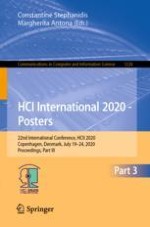2020 | OriginalPaper | Chapter
Emergence of Human-Centric Information Security – Towards an Integrated Research Framework
Author : Bin Mai
Published in: HCI International 2020 - Posters
Publisher: Springer International Publishing
Activate our intelligent search to find suitable subject content or patents.
Select sections of text to find matching patents with Artificial Intelligence. powered by
Select sections of text to find additional relevant content using AI-assisted search. powered by
